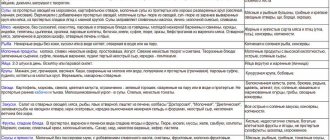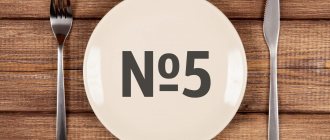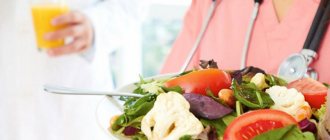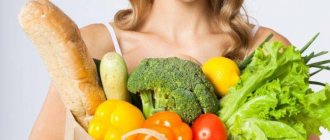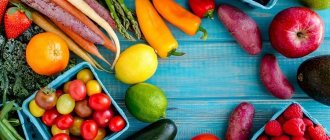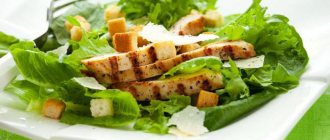During the period of breastfeeding, young mothers should very diligently monitor the foods they consume, because the general condition of the baby depends on this. Of course, many dishes and products are subject to a temporary taboo. Often, nursing mothers resort to a dairy-free diet, in which you can find quite nutritious and healthy dishes.
Experts note that when compiling a daily menu, it is very important to choose products that will ensure the maximum supply of all useful substances to the growing body.
Necessity of diet
Almost always, women who prefer breastfeeding go on a variety of diets, since the food consumed has a very significant effect on the composition of breast milk. Children's delicate bodies often simply cannot cope with what is now sold everywhere in stores, and therefore children begin to have health problems. Stomach colic, bloating, and even more serious consequences can occur when a mother decides to ignore the rules of healthy eating.
Refusal of milk

But even those mothers who are happy to obey the rules and watch what they eat are very reluctant to switch to a dairy-free nursing diet, because they feel that milk simply cannot harm their children's health. In fact, it should be recognized that for centuries this product was the main one in the diet during lactation, and if the mother herself could not feed the child, then milk from a cow or goat came to the rescue. However, all this happened before. Now milk is produced industrially and does not inspire much confidence, since all new processing qualities negatively affect its quality. In fact, you shouldn’t even trust farm products in this situation, since there is no way to find out what exactly the animal was fed.
How to identify a milk allergy in a child?
The symptoms of this disease are known to every person. However, there are a number of differences that parents should be informed about in advance. They should pay attention to the following:
- Rashes of various kinds periodically appear on the skin. Pimples can be single or clustered. Some babies may notice the appearance of red cheeks. Over time, the wound begins to get wet and itch.
- When an infant is allergic to milk, intestinal dysfunction is observed. It may manifest itself in the form of diarrhea. The stool contains mucus and streaks of blood. Depending on the individual characteristics of the body, some infants, on the contrary, experience constipation.
- The baby experiences severe discomfort due to colic and gas. If the situation is not stopped in time, the risk of developing severe pain increases.
A complete blood test will be required to make a correct diagnosis. Only a specialist can work on this. Thanks to him, mommy will be offered a lactose-free diet. It will prevent the development of serious gastrointestinal diseases. You can reintroduce dairy products into your diet at a certain age and with prior permission from your doctor.

Calcium can be obtained not only from milk
The essence of the diet
A dairy-free diet for a nursing mother, as the name suggests, is primarily based on completely removing whole cow's milk from the diet, as well as products that contain large amounts of casein, that is, milk protein. It is designed in such a way as to completely replace, with the help of other products, the lack of nutrients in the body that a person receives from milk. In addition, the dairy-free diet menu for nursing mothers should be quite balanced, since it is necessary not only to give the baby safe breast milk, but also enriched with vitamins and nutrients. In addition, the mother herself, after pregnancy and difficult childbirth, also needs to regain strength, which cannot be done if the nutrition is not adequate.
Fruit dessert
Required:
- two peaches;
- one banana;
- 150 g pineapples;
- 2 tbsp. l. yogurt;
- 2 tbsp. l. muesli;
- 1 tsp. lemon juice.
Cooking process:
- Wash the fruits thoroughly and carefully cut them, add muesli to them.
- Season the salad with yogurt and lemon juice.
That's it, a delicious and healthy dessert for nursing mothers is ready. By the way, if any of the listed fruits are missing, you can simply replace them with others.
Lactase deficiency
Another thing is when a dairy-free diet for a nursing mother is used in cases where the child has an allergic reaction to milk, but now the number of cases of lactase deficiency has increased. This disease itself indicates that there is an insufficient amount of a special enzyme in the children’s intestines, which is directly intended to break down lactose. If previously such children were completely removed from breastfeeding, now you can simply add special artificial components to the diet. If a child has lactase deficiency, dishes for a dairy-free diet for the mother should completely exclude milk and products made with its use, that is, cottage cheese, kefir, cheese, butter and many others.
Reasons for negative manifestations
The ideal feeding for an infant is still mother's milk. However, in some cases it is necessary to resort to specially adapted mixtures. Until recently, it was considered normal to supplement a baby’s milk supply with animal milk. The question arises as to why a negative reaction to this food product occurs in the baby’s body.
Additionally, it should be noted that homemade milk cannot compare with the product from the store. The latter contains a small amount of components beneficial to the body. The environmental situation also has a negative impact on the animal.
The formation of the fetus is influenced by the woman’s nutrition during pregnancy. Dyes, preservatives and modified products have a negative impact on the growing body. Against this background, the baby may be unable to digest proteins. These components are always present in breast milk.
In medical practice, cases have also been identified where the inability to digest a certain component is transmitted at the genetic level. In this case, a similar allergic reaction has already been observed in one of the parents. Milk intolerance may disappear with age. In this case, in the future, a person will be able to drink the milk of any animal without fear for his life.
Milk replacement
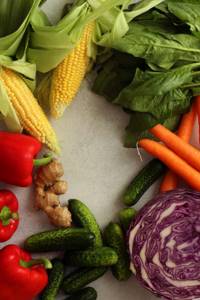
Like any other dietary plan, a dairy-free diet for a nursing mother has its limitations, and therefore you should carefully follow your doctor’s recommendations and not use it solely for weight loss. The lack of milk in the diet depletes the amount of nutrients received, so a deficiency of calcium, vitamin A, E, zinc, iodine and many others may develop. All these substances are vital during the recovery period after childbirth, and therefore they must be consumed. It is very important to know what you can eat on a dairy-free diet for nursing mothers to prevent the development of these problems:
- Cow's milk can be replaced with its analogues - soy, coconut or almond. They contain calcium, as well as vegetable protein and a fairly wide range of vitamins.
- Vegetables include more broccoli, cauliflower, celery and parsley in your diet, as they are also rich in calcium.
- It is useful for a mother to consume a variety of meat, poultry and fish while adhering to a dairy-free diet - they provide animal protein and many useful substances.
What drinks can you drink on a dairy-free diet?
During the period of breastfeeding, the mother needs to observe not only proper nutrition, but also an adequate drinking regime. It is very important to drink the required amount of ordinary clean water without any additives.
In addition, nursing mothers can pamper themselves with green tea, compotes based on berries and fruits, which are recommended to be prepared with virtually no sugar (it can be replaced with some dried fruits - raisins, dried apricots).
During such a crucial period of life, girls should deny themselves coffee, carbonated drinks, packaged juices, and alcoholic beverages.
Diet rules

As mentioned earlier, a dairy-free diet menu for a nursing woman should limit the consumption of milk and many products based on it. However, this does not mean that they should be completely eliminated immediately. Quite often, thermally processed or fermented fermented milk products lose their allergic properties and do not cause any harm. That is why it is recommended to consume natural yogurt, kefir or cottage cheese in small quantities, and then monitor exactly how the child reacts to them. But in general, such a menu should be based on the following rule: limiting milk means replenishing nutrients from vegetables, fruits, fish and meat. You need to make your diet as nutritious and complete as possible. In addition, we can mention one more rule that a mother should follow on a dairy-free diet - cook porridge exclusively in water, and replace the milk itself in recipes with vegetable decoctions. This will not only replenish the balance of nutrients, but also help remove the allergen from the child’s body.
The best recipes for dishes on a dairy-free diet
Experts have compiled a selection of the best recipes that are quite simple, healthy and nutritious for a dairy-free diet.
Baked poultry fillet
Required:
- chicken (can be replaced with turkey) – 800 g;
- onion – 1 head;
- chopped parsley root – 1 tbsp. l.;
- sour cream - 2 tbsp. l.;
- greens, chopped to your liking - 2 tbsp. l.;
- black pepper - to taste;
- salt - to taste.
Cooking process:
- Rinse the meat well, cut it into portions, place on foil, lightly salt.
- Grease each piece of meat with sour cream, and place onion, previously finely chopped, herbs, and spices on top.
- Wrap the meat in foil and place in the oven, which is first preheated to 200 degrees.
- Bake based on the type of meat: turkey – 50 minutes, chicken – 30 minutes.
After the time has passed, do not forget to pierce the meat with a fork - this will help make sure that it is completely ready to eat. As a side dish, it is recommended to use mashed potatoes, buckwheat, and boiled rice. Fresh vegetables are a good addition.
Menu creation

It will be quite simple for mom to create a menu on a dairy-free diet, since the list of allowed products is extensive. Gradually it can become more and more free, especially if the baby's intestines begin to become stronger, but in the first months the diet should be followed very strictly to prevent possible complications. Below is a sample menu for the day, which you can use to create your own diet.
Dinner
Lunch should be the largest meal of the day, as well as the most nutritious and calorie-dense. You should start with the first one - fish soup or vegetable soup would be an excellent option. As a hot dish, you can serve it with a steamed chicken cutlet with a side dish of stewed vegetables. As a drink, you can drink a glass of natural juice or tea. If desired, you can also serve berries or fruits to the table to taste, since you need to focus on what is best absorbed by the baby and does not cause an allergic reaction in him.
Menu for the week lactose-free (dairy-free)
If you follow this style of nutrition, you need to consider it as a chance to learn how to cook delicious dishes, cleanse the body, normalize weight, improve carbohydrate metabolism and the condition of the skin of not only the child, but also the nursing mother. Only with a positive attitude does a dairy-free diet bring real benefits.
It is very important that every day in the diet there are products that are an equivalent replacement for those excluded. During lactation, the menu must be balanced in terms of basic nutrients - proteins, fats and carbohydrates, vitamins, as well as calories.
For example, you can use this weekly diet.
- buckwheat porridge with stewed apples;
- bananas;
- fish soup with millet, salad of boiled carrots with sesame seeds and cubes of tofu;
- stewed cauliflower and chicken beef stroganoff.
- oatmeal with dried apricots, flax seeds;
- applesauce;
- vegetable soup, turkey cutlets with buckwheat porridge;
- fish baked with vegetables and herbs.
- pumpkin porridge with rice;
- tofu and cucumber sandwich;
- broccoli soup with herbs, fish meatballs with mashed potatoes;
- Steam omelette with spinach, boiled carrots.
- oatmeal with dates and apples;
- rice casserole with pumpkin and raisins;
- soup with chicken and noodles, vegetable stew of zucchini, carrots and cauliflower;
- steamed fish with herbs, boiled potatoes and cucumbers.
- stewed carrots with apples and dried apricots;
- bananas, oat milk;
- turkey meatball soup, buckwheat porridge with cucumber salad and tofu;
- green pepper stuffed with rice and minced veal.
- oatmeal with apples;
- sandwiches with meat pate and cucumber;
- vegetable soup with oatmeal, fish with boiled potatoes;
- buckwheat porridge with stewed chicken, cucumbers.
- rice porridge with dried apricots and raisins;
- baked apples;
- fish soup, fish balls with pasta;
- turkey with vegetable stew.
Quite strict restrictions must be observed in the first three months, then vegetables (tomatoes, eggplants, young beans, beets), as well as seasonal fruits and berries, are gradually added to the menu. Not allowed throughout the entire feeding period:
- grapes, melon, strawberries, oranges and tangerines;
- fatty fish, caviar;
- honey;
- store-bought sauces;
- smoking, marinades, pickles;
- pork, beef fat;
- strong tea and coffee;
- chips, snacks, sushi, fast food.
Spring rolls with fresh vegetables
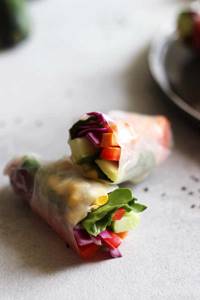
Light and nutritious vegetarian spring rolls with a touch of peanut butter make a great snack. Not only do they contain no dairy, but they are also filled with a wide variety of vegetables.
Ingredients:
- spinach - 100 g;
- corn - 1/2 cob;
- carrots - 1 piece;
- 2 cucumbers;
- bell red pepper;
- red cabbage - 100 g;
- 6 sheets of rice paper.
To prepare the peanut sauce, you will need 70 g of peanut oil, 2 teaspoons of fresh ginger, a couple of cloves of garlic, 1 tablespoon of soy sauce, a little chili, sesame oil and water.
The first step in preparing spring rolls is to soak the rice paper. Instructions for this can be found on the packaging, so you should act according to them. After this, you should prepare the vegetables - shred the cabbage, chop the spinach, remove the grains from the corn, and cut all other vegetables into strips. After this, combine all the ingredients for the peanut sauce in a food processor. In order to properly assemble this dish, you need to place a small amount of vegetables on rice paper, and then roll everything tightly and cut into 2 parts. They are served with sauce.
Vegetable soup
Required:
- 1.2 liters of water;
- 5 potatoes;
- one carrot;
- frozen spinach – 200 g;
- one egg;
- butter – 20 g.
Cooking process:
- Cut the vegetables, add water and put on fire. You can simmer them a little in a frying pan in advance, which will give the dish a more expressive taste.
- Place the spinach in a heated frying pan with butter, simmer until completely defrosted, and add to the soup.
- Cook until the potatoes are cooked.
- Beat the egg and pour it into the soup in a thin stream, stirring as you do so.
- Season the dish with black pepper and a little salt.
This dish can be prepared with the addition of lean meat, but do it with a second or third broth. Instead of a chicken egg, you can add two or three quail eggs. If desired, you can add greens.
Healthy cookies

Being on a dairy-free diet does not mean that you need to give up small weaknesses. You can make these delicious cookies that are completely dairy free. In addition, the products included in it help improve lactation.
Ingredients:
- 1 glass of rolled oats;
- 3/4 cup regular all-purpose flour;
- 3 tablespoons brewing yeast;
- 2 tablespoons of ground flax seeds;
- baking powder;
- coconut oil - 1 cup;
- half a glass of sugar;
- a quarter glass of cane sugar;
- 1 egg;
- 1 teaspoon vanilla extract.
To create cookies, you will need to preheat the oven to 160 degrees, and then prepare a baking tray. Place parchment on it and then leave it aside until needed. To make the dough, mix oatmeal and regular flour in a separate bowl. Yeast, ground flaxseed, baking powder and salt are added to them. Mix this dry mixture thoroughly until it becomes homogeneous. Next, you should take a mixer and use it to beat the coconut oil with both types of sugar. Beat for about 3 minutes until the mixture is light and fluffy. After this, the egg and vanilla are added. Whisk everything until the mixture is smooth, and then gradually begin adding the dry ingredients. The dough must be cooked until it becomes soft and elastic in consistency. To make cookies, you need to take small pieces of dough, roll them into balls and place them on parchment. After this they need to be slightly flattened. Cookies are baked for about 12 minutes. Take it out of the oven as soon as it turns golden around the edges, and then let it rest for about five minutes before serving. It can be stored for about a week in an airtight container without losing its taste or benefits.
Reviews
A dairy-free diet, although intended to limit the mother’s nutrition, is primarily aimed at improving the well-being of the newborn baby. That is why it is quite simple to follow it if you put the baby’s health first. At first it may seem that giving up milk is very difficult, but lost nutrients can easily be replenished from other sources if desired. Judging by the reviews, it is best to entrust the correct preparation of a balanced menu to a nutritionist, who will help you introduce dishes into the diet that are not harmful to the health of both mother and child.

